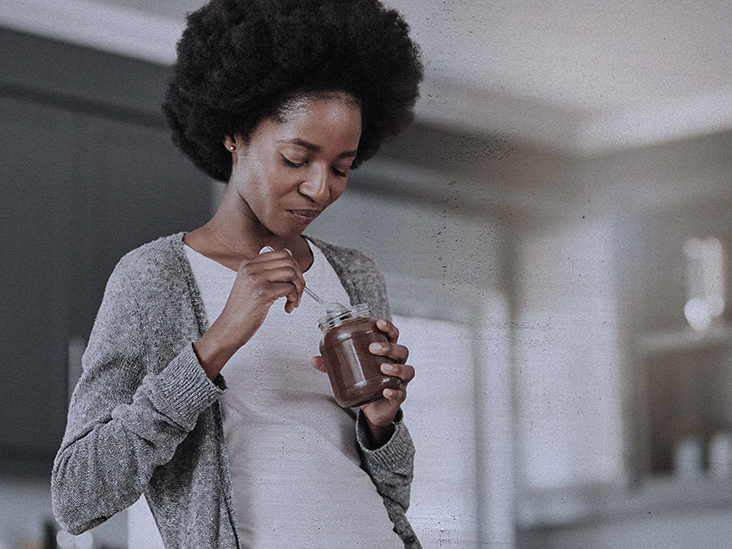Premenstrual syndrome (PMS) is a collection of physical and psychological symptoms that can occur in a cyclical pattern in people who menstruate. The start of symptoms coincides with the second half of the menstrual cycle, called the luteal phase.
Symptoms typically resolve within a
While doctors are unsure why some people experience PMS symptoms, contributing factors may include certain lifestyle factors and fluctuations in the levels of sex hormones and serotonin.
Here, learn more about PMS symptoms and how to treat and prevent them.
PMS refers to clinically significant physical and psychological symptoms that occur during the second half of the menstrual cycle.
Some people may experience mild-to-moderate symptoms, whereas others may report symptoms that are severe enough to affect their normal daily functions.
Physical symptoms may include:
Emotional symptoms can include:
PMS symptoms may
Premenstrual symptoms occur before a person starts their period.
The menstrual cycle consists of two phases: the follicular phase, which starts on the first day of bleeding, and the luteal phase, starting after ovulation.
PMS symptoms occur during the luteal phase.
A
Pregnancy symptoms may sometimes resemble PMS because they are typically nonspecific.
In general, one of the most noticeable signs of pregnancy is a missed period. However, some birth control methods can cause a person to stop having periods altogether.
Additionally, some pregnant people experience implantation bleeding, which is a bleed that may be similar to a very light period.
The
In a study in the
Other early symptoms of pregnancy include:
Doctors recommend that people who are sexually active track their menstrual cycle and symptoms. This information can help people evaluate whether their symptoms are due to PMS or pregnancy.
To check for pregnancy, people can purchase at-home urine pregnancy tests from a pharmacy.
It is important to follow the instructions for the specific pregnancy test as some can detect pregnancy earlier than others.
The best time for people to check for pregnancy is
According to Planned Parenthood, home pregnancy tests are 97.4% accurate when a healthcare professional uses them. When a person self-administers a home pregnancy test, the accuracy rate can drop to 75%.
Premenstrual dysphoric disorder (PMDD) is a more severe form of PMS. It can cause severe anxiety, depression, and irritability in the
People experiencing severe PMS symptoms that significantly affect their quality of life and daily functioning may have PMDD and may need to seek treatment.
According to Johns Hopkins Medicine, symptoms of PMDD include:
It can also include the same physical symptoms as PMS.
Learn more about PMDD here.
To diagnose PMS, doctors may need to rule out other
The
However, the authors of a
Lowered estrogen levels trigger the release of norepinephrine from the hypothalamus. Norepinephrine is a chemical in the brain that works as a hormone and neurotransmitter.
Norepinephrine then causes the levels of acetylcholine, dopamine, and serotonin in the brain to decrease. The change in the levels of these chemical substances may lead to many of the psychological and neurological symptoms of PMS, such as depression, insomnia, and fatigue.
Lifestyle factors may also contribute to PMS symptoms,
The
Depending on the symptoms, the doctor may choose from a variety of medications.
Different treatments for PMS include:
Other nondrug interventions that may help treat certain PMS symptoms include:
Although people cannot prevent PMS symptoms, certain lifestyle factors can potentially worsen them.
Therefore, doctors may suggest:
The American College of Obstetricians and Gynecologists note that eating six smaller meals per day instead of three larger ones can help keep a person’s blood sugar level stable, which may help reduce symptoms.
A study featuring in
While many treatment and prevention strategies may help people experiencing PMS symptoms, symptoms typically
People experiencing severe PMS symptoms that affect their daily functions or quality of life should speak with a doctor.
Doctors may suggest certain preventive measures and treatment options for particular symptoms.
Almost
Sometimes, people may require treatment if their symptoms affect their quality of life or activities of daily living.
Doctors can suggest several treatment and preventive measures for people with bothersome PMS symptoms.
Lifestyle and dietary factors may contribute to PMS symptoms. Reducing stress, quitting cigarette smoking, exercising regularly, and consuming a healthful diet may help reduce the severity of PMS symptoms.
Last medically reviewed on January 28, 2021
11 sourcescollapsed
Most females experience at least some symptoms of premenstrual syndrome (PMS). This article explores the symptoms, causes, and treatments of PMS. We…
Premenstrual dysphoric disorder is a severe form of premenstrual syndrome. Symptoms are often intense enough to disrupt daily activities, and they…
Many symptoms of premenstrual syndrome (PMS) and early pregnancy are similar, such as mood changes, breast tenderness, and fatigue. However, other…
Menstruation, or a period, is when the lining of the uterus sheds and leaves the body as blood. It marks the beginning of a menstrual cycle.
Menstruation is a natural effect of the production of an egg in the ovaries. It can cause a range of effects across the body and its systems. Learn…
OUR BRANDS
